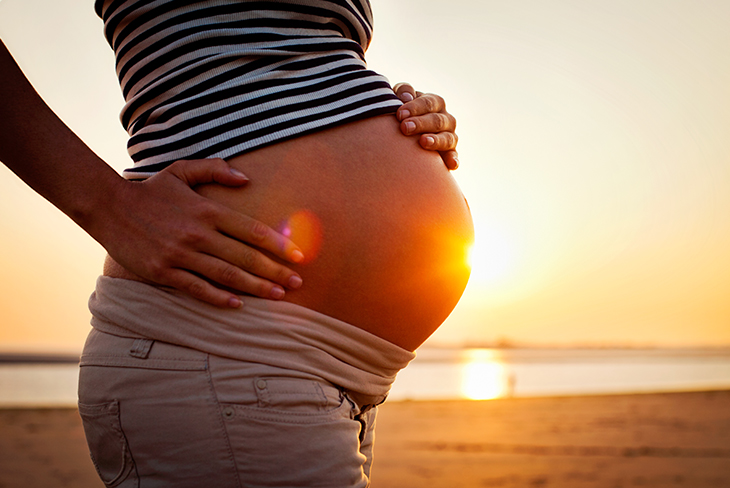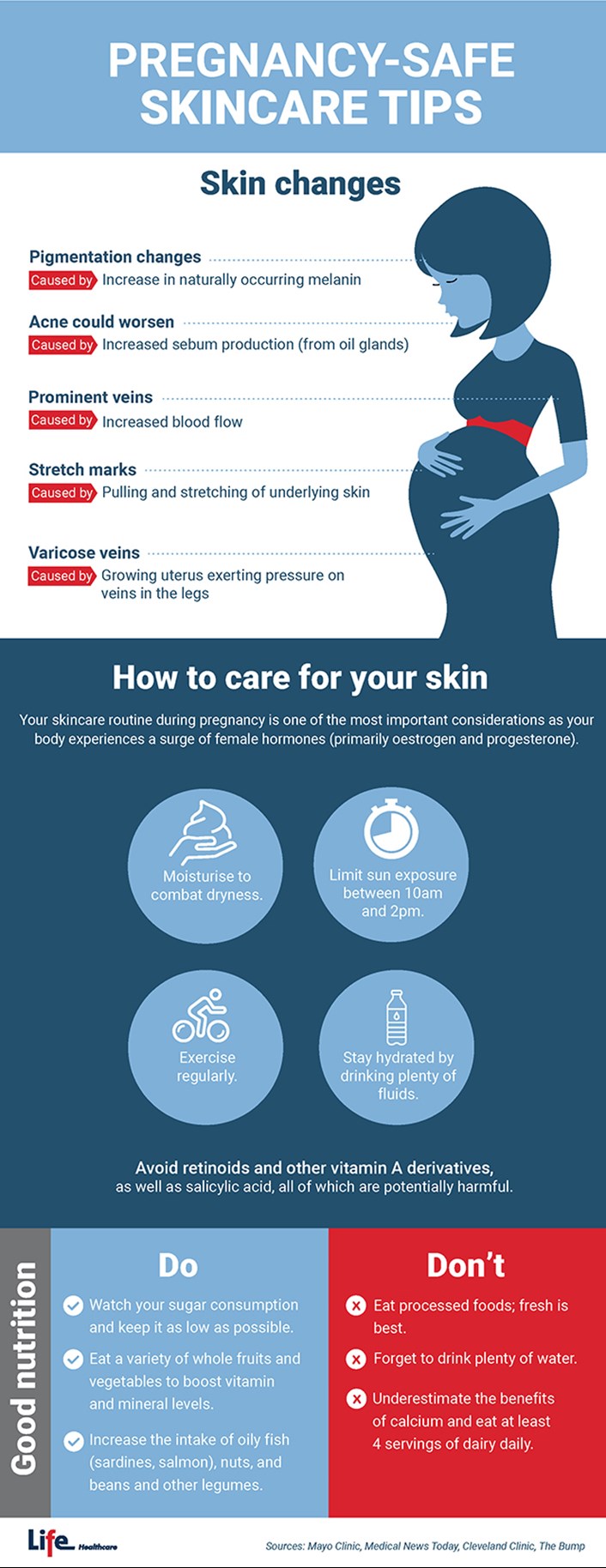Your skin during pregnancy

Stretch marks may be a common skin concern during pregnancy, but it’s not the only one. These are a few skin issues during pregnancy and how to address them.
In pregnancy, the skin can exude a truly healthy glow because of a combination of factors. For example, greater blood volume can give the cheeks a flushed appearance, and more sebum can make the skin shine. While pregnant women experience hormonal changes differently, there are a host of common skin conditions that surface during this time. Have a look at the skin changes you may experience below:


All about acne
‘Acne is very common in pregnancy, especially in the first and second trimesters and, in some cases, can be quite severe. When the hormones have settled by the third trimester, it can subside, but this is not always the case,’ says Dr Abigail Lukhaimane, a gynaecologist at Life Fourways Hospital. ‘I do my best to reassure moms that acne is a natural, cosmetic condition and that it will get better when hormones stabilise.’
Primary cause: Dr Zinzi Limba, a dermatologist at Life Mercantile Hospital, explains that increased levels of androgen hormones, believed to be important for cervical ripening at full term, as well as for maintaining a healthy pregnancy, can cause acne.
What can you do? ‘Managing acne in pregnancy can be difficult because many prescriptions and over-the-counter treatments are contraindicated for pregnancy and can cause birth defects,’ says Dr Limba. She encourages women to talk to their doctor about skincare products that are safe to use during pregnancy.
Genesis Maternity Clinic maternity coach Tsholo Bless recommends some drug-free options for managing outbreaks:
- When washing your face, use an oil-free, alcohol-free cleanser, limiting washes to twice a day. Avoid over-cleansing, as this stimulates the oil (sebaceous) glands in the skin to produce more oil (sebum).
- Change pillowcases often and opt for cotton, which helps to keep cool.
- Try to keep your hands away from your face so that you do not spread bacteria from your fingers to your face.
- Avoid the temptation to squeeze or pop your pimples, as this can cause reinfection and scarring.
Chloasma: the ‘mask’ of pregnancy
Also known as melasma, this common skin problem is characterised by dark spots on the face during pregnancy (hyperpigmentation) on the forehead, nose, cheeks and chin.
Primary cause: ‘Oestrogen and progesterone sensitivity often accompany this condition and can trigger it,’ says Dr Lukhaimane. ‘Usually it is self-limiting and will fade after pregnancy. Sun exposure can also predispose you to melasma. In addition, people with darker skin are more at risk than those with fair skin.’
How do I know I have it? A visual examination of the area is often enough for your care provider to diagnose it, says Dr Limba. ‘However, dermatologists can perform a bedside test using a Wood’s lamp – a special light that allows the doctor to check for any bacterial and fungal infections to determine how many layers of skin have been affected.’
Living with chloasma: Not all cases clear up with treatment, but there are behavioural changes that can help minimise chloasma. ‘Discuss safe prescription options with your doctor,’ says Tsholo.
- If you are self-conscious, use paraben-free makeup to cover areas of discoloration.
- Wear sunscreen containing titanium dioxide and zinc oxide – every day!
- Wear a wide-brimmed hat and protective clothing when you are out in the sun.
- Join a support group for your condition.
The pregnancy line
Linea nigra is the vertical line that runs down the middle of the abdomen, between the belly button and the pubis. During pregnancy, it is brown and darker than the skin tone of the woman, explains Dr Lukhaimane.
Primary cause: ‘It is understood that the linea nigra and darkening around the nipples is caused by oestrogen and progesterone,’ explains Dr Limba. The good news is that after pregnancy and birth, it goes away and requires no treatment.
Stretch marks
‘Stretch marks are common in pregnancy and do not cause harm to the mother or baby, but some women experience itching around the areas where they occur,’ says Dr Lukhaimane.
Primary cause: Dr Limba explains that skin is highly adaptable and can stretch and contract, but during pregnancy, the skin does not have enough time to adjust. This causes it to tear and scar, which creates stretch marks. They can occur anywhere: on the hips, thighs, belly, breasts, lower back and buttocks,’ says Dr Limba.
Treatment: Bless says that there is no absolute treatment for stretch marks, but it’s comforting to know that they will fade into paler scars and sometimes become less noticeable. ‘The best advice would be to make sure that you keep the skin well nourished, and a cream or oil made from plant oils rich in omega-3, -6 and -9 can be very useful,’ she adds.
3 expert skincare tips
- If you’re going to be in the sun, use a pregnancy-friendly sunscreen.
- When you’re pregnant, all medication should be cleared by your gynaecologist.
- Increase your water intake to ensure you are adequately hydrated.
The information is shared on condition that readers will make their own determination, including seeking advice from a healthcare professional. E&OE. Life Healthcare Group Ltd does not accept any responsibility for any loss or damage suffered by the reader as a result of the information provided.

